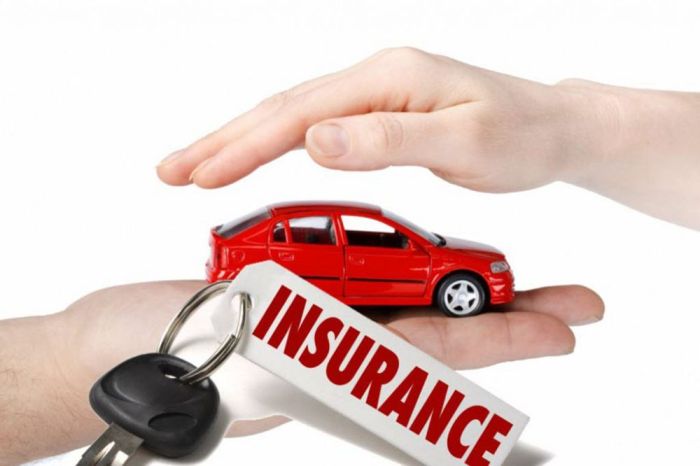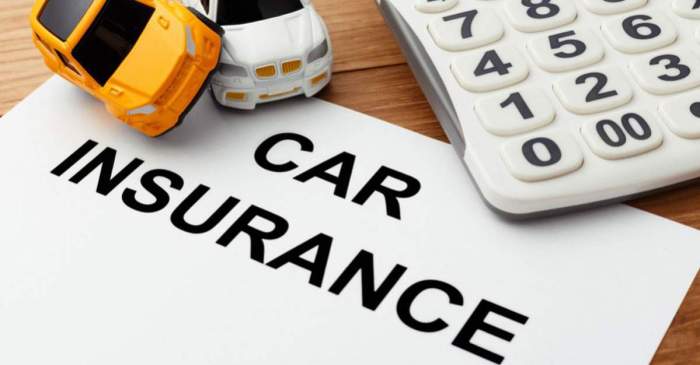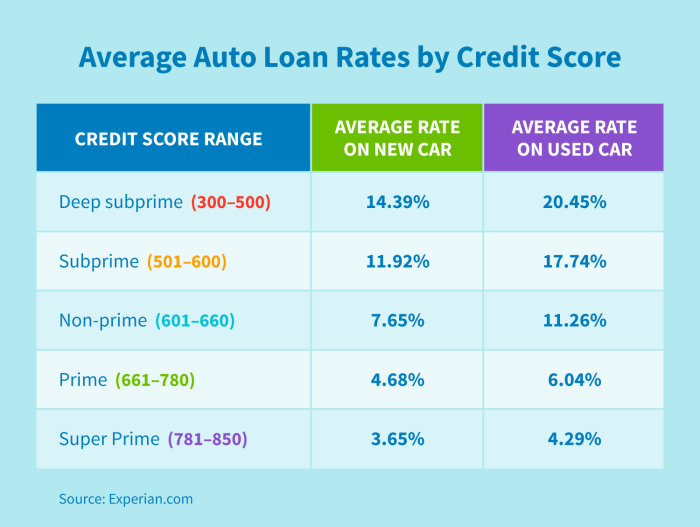How to get the best car insurance rates for a new car is a question on every new car owner’s mind. Navigating the world of insurance can feel overwhelming, especially when you’re excited about your shiny new set of wheels.
But don’t worry, with a little research and strategic planning, you can find the best rates and coverage for your needs.
The key is to understand your needs, shop around for quotes, and factor in all the elements that influence insurance rates. This includes everything from your driving history to the safety features of your new car. By taking the time to do your homework, you can save money and ensure you’re properly protected.
Understanding Your Needs: How To Get The Best Car Insurance Rates For A New Car

Before you start shopping for car insurance, it’s important to understand your needs and what factors might influence your car insurance rates. You need to consider your car, your driving habits, and your financial situation to make sure you’re getting the right coverage at the right price.
Factors Influencing Your Car Insurance Needs
Understanding the factors that influence your car insurance needs is crucial in making informed decisions. These factors help you determine the appropriate level of coverage and the best way to manage your insurance costs.
- The Type of Car You Drive: The make, model, and year of your car significantly impact your insurance rates. Luxury cars, high-performance vehicles, and newer cars tend to be more expensive to insure due to their higher repair costs and potential for theft.
- Your Driving History: Your driving record is a major factor in determining your car insurance rates. A clean driving record with no accidents or traffic violations will generally result in lower premiums. However, if you have a history of accidents or tickets, your insurance rates will likely be higher.
- Your Location: The area where you live can also affect your car insurance rates. Cities with higher crime rates or more traffic congestion tend to have higher insurance rates.
- Your Age and Gender: Younger drivers, especially those under 25, often face higher insurance rates due to their higher risk of accidents. Gender can also play a role, with some insurance companies charging higher rates for young men than young women.
- Your Credit Score: In some states, insurance companies use your credit score as a factor in determining your rates. A good credit score can often lead to lower insurance premiums.
Types of Car Insurance Coverage
Different types of car insurance coverage are available to meet your specific needs. It’s important to understand these options to ensure you have adequate protection without paying for unnecessary coverage.
- Liability Coverage: This is the most basic type of car insurance and is usually required by law. Liability coverage protects you financially if you cause an accident that injures someone or damages their property. It covers the other driver’s medical expenses, lost wages, and property damage.
- Collision Coverage: This coverage pays for repairs or replacement of your car if it’s damaged in an accident, regardless of who is at fault.
- Comprehensive Coverage: This coverage protects your car from damage caused by events other than accidents, such as theft, vandalism, or natural disasters.
- Uninsured/Underinsured Motorist Coverage: This coverage protects you if you’re involved in an accident with a driver who doesn’t have insurance or doesn’t have enough insurance to cover your losses.
- Medical Payments Coverage: This coverage pays for your medical expenses, regardless of who is at fault, if you’re injured in an accident.
- Personal Injury Protection (PIP): This coverage, often required in no-fault states, pays for your medical expenses and lost wages, regardless of who is at fault.
Determining the Appropriate Coverage Levels
It’s important to determine the appropriate coverage levels based on your individual needs and financial situation. Consider the following:
- Your Financial Situation: How much can you afford to pay out of pocket if you’re involved in an accident? If you have a limited budget, you may want to consider lower coverage levels, but make sure you’re still adequately protected.
- The Value of Your Car: If you have a newer or more expensive car, you may want to consider higher coverage levels to ensure you’re fully protected in case of an accident.
- Your Driving Habits: If you frequently drive in high-traffic areas or during peak hours, you may want to consider higher coverage levels.
- Your Personal Risk Tolerance: Some people are more risk-averse than others. If you’re comfortable taking on more risk, you may be able to get away with lower coverage levels.
Shopping Around for Quotes

Okay, so you know what kind of coverage you need, now it’s time to start shopping around for quotes! This is where the real fun begins, because you get to compare prices and find the best deal for your new ride.
There are a few different ways to get quotes, and each has its own pros and cons.
Using Online Quote Comparison Tools
These tools are super convenient because you can get quotes from multiple insurance companies all in one place. Just enter your information once, and the tool does the rest. It’s like a one-stop shop for car insurance quotes! Here’s how to use these tools:* Step 1: Find a reputable comparison website.There are tons of websites out there, but some are better than others.
Look for sites that are well-known and have good reviews.
Step 2
Enter your information. You’ll need to provide some basic information about yourself and your car, like your age, driving history, and the make and model of your car.
Step 3
Compare quotes. The website will show you a list of quotes from different insurance companies.
Step 4
Read the fine print. Before you choose a policy, make sure you understand what’s covered and what’s not. Pay attention to things like deductibles, limits, and exclusions.
Online comparison tools are a great way to get a quick overview of what’s available, but they don’t always show you all the options.
Contacting Insurance Companies Directly
Even though those comparison websites are awesome, sometimes you need to talk to an actual human to get the best deal. This is where contacting insurance companies directly comes in. * Step 1: Research insurance companies.You can use online resources like J.D. Power or Consumer Reports to see which companies are rated highly for customer satisfaction.
Step 2
Get a quote. You can usually get a quote online or over the phone.
Step 3
Ask questions. Don’t be afraid to ask about discounts, coverage options, and anything else that’s important to you.
Step 4
Compare quotes. Once you have quotes from a few different companies, compare them side-by-side and choose the best one for you.
Calling insurance companies directly allows you to get personalized quotes and ask questions that might not be answered by online comparison tools.
Factors Affecting Insurance Rates

Insurance companies use a variety of factors to determine your car insurance rates. These factors are designed to assess your risk as a driver and help them determine how likely you are to file a claim.
Vehicle Make and Model
The make and model of your car play a significant role in your insurance premium. Some vehicles are considered more expensive to repair or replace, while others are known for their safety features. For example, a luxury sports car will likely have higher insurance rates than a compact sedan due to its higher repair costs and potential for higher-speed accidents.
Age
Your age is a factor in insurance rates because younger drivers have statistically higher accident rates. As drivers gain experience and age, their risk profiles tend to decrease, leading to lower premiums.
Driving History
Your driving history is a crucial factor in determining your insurance rates. A clean driving record with no accidents or traffic violations will generally lead to lower premiums. On the other hand, having a history of accidents, speeding tickets, or DUI convictions will significantly increase your insurance rates.
Location
The location where you live can significantly affect your car insurance rates. Insurance companies consider factors such as the density of traffic, crime rates, and weather conditions in your area. For example, urban areas with heavy traffic and high crime rates tend to have higher insurance rates than rural areas with lower traffic and crime.
Safety Features and Technology, How to get the best car insurance rates for a new car
Cars equipped with advanced safety features and technology can often lead to lower insurance premiums. These features include anti-lock brakes (ABS), electronic stability control (ESC), airbags, and lane departure warning systems. These features help prevent accidents or minimize their severity, reducing the risk for insurance companies.
Discounts
Insurance companies offer various discounts to help policyholders save money. Some common discounts include:
- Good Student Discount:This discount is available to students who maintain a good academic record.
- Safe Driver Discount:This discount is given to drivers with a clean driving record and no accidents or violations.
- Multi-Car Discount:This discount is offered when you insure multiple vehicles with the same insurance company.
- Multi-Policy Discount:This discount is available when you bundle your car insurance with other insurance policies, such as homeowners or renters insurance.
- Anti-theft Device Discount:This discount is given to vehicles equipped with anti-theft devices, such as alarms or tracking systems.
- Loyalty Discount:This discount is often offered to customers who have been with the same insurance company for a long time.
To qualify for these discounts, you must meet the specific requirements set by your insurance company.
Negotiation and Refinement
Once you’ve shopped around and found a few quotes that seem reasonable, it’s time to consider negotiating and refining your policy to get the best possible rate. While not all insurance companies are open to negotiation, it’s always worth a try.You’ve gathered quotes and understood your needs, but there’s still room to optimize your car insurance.
This section dives into negotiation strategies, policy review, and how to make adjustments for better coverage and costs.
Negotiating Your Rate
You can leverage your good driving history, multiple policy discounts, and loyalty to get a better rate.
- Highlight your clean driving record:If you have a long history of safe driving without any accidents or violations, this is a strong bargaining chip. Mention your clean driving record and how it demonstrates your responsible driving habits.
- Bundle your policies:Many insurance companies offer discounts for bundling multiple policies, such as car insurance, home insurance, or renters insurance. If you have other insurance needs, inquire about bundling options and potential discounts.
- Inquire about loyalty discounts:Some insurance companies reward long-term customers with loyalty discounts. If you’ve been with your current insurer for a significant period, ask about any available loyalty discounts.
- Compare with other quotes:Be prepared to show the insurance company quotes you’ve received from other providers. This demonstrates your willingness to switch insurers if they don’t offer a competitive rate.
- Negotiate with the agent:Don’t be afraid to ask your insurance agent about potential discounts or adjustments to your policy. They may have some flexibility in offering better rates.
Reviewing Your Policy
After negotiating your rate, it’s crucial to carefully review your insurance policy to ensure you understand the coverage you’re getting and the costs associated with it.
- Coverage types:Review the types of coverage included in your policy, such as liability, collision, comprehensive, and uninsured motorist coverage. Ensure you understand the limits and deductibles associated with each coverage type.
- Deductibles:Deductibles are the amounts you pay out-of-pocket before your insurance kicks in. Higher deductibles generally lead to lower premiums, but you’ll have to pay more in the event of a claim.
- Exclusions:Understand the exclusions in your policy, which are specific situations or circumstances that are not covered by your insurance.
- Claims process:Familiarize yourself with the claims process, including how to file a claim, what documentation is required, and the time frame for processing claims.
Making Adjustments
Once you’ve reviewed your policy, you may identify areas where you can make adjustments to optimize coverage and cost.
- Reduce unnecessary coverage:If you have a very old car with a low value, you might consider dropping collision and comprehensive coverage, which are often not necessary for older vehicles.
- Increase your deductible:Increasing your deductible can lead to lower premiums, but you’ll have to pay more out-of-pocket in the event of a claim. Carefully consider your risk tolerance and financial situation before making this adjustment.
- Explore discounts:Inquire about any additional discounts you may be eligible for, such as good student discounts, safe driver discounts, or discounts for anti-theft devices.
Additional Considerations
Beyond the core aspects of shopping for car insurance, there are several additional factors that can influence your rates and overall experience. These factors, while seemingly less direct, can significantly impact your premium and overall cost of insurance. Understanding these nuances can help you make informed decisions and potentially save money.
Financial Stability and Credit Score
Your credit score plays a surprising role in determining your car insurance rates. Insurers believe that individuals with good credit are more financially responsible and less likely to file claims. A higher credit score often translates to lower premiums.
Insurance companies view a good credit score as an indicator of financial responsibility, which they correlate with responsible driving habits.
If you have a low credit score, you can improve it by paying your bills on time, keeping your credit utilization low, and avoiding unnecessary credit applications. While your credit score may not be the only factor considered, it’s a significant element in the insurance rate calculation.
Conclusion

Getting the best car insurance rates for your new car doesn’t have to be a stressful process. By following these steps and staying informed, you can secure the best coverage at a price that fits your budget. Remember, it’s all about understanding your needs, comparing options, and negotiating for the best deal.
So, buckle up and get ready to drive off with confidence, knowing you’ve got the right insurance plan in place.
Answers to Common Questions
How do I know if I’m getting the best car insurance rate?
It’s best to compare quotes from multiple insurers. You can use online comparison tools or contact insurance companies directly. Make sure to consider all factors that impact your rate, such as your driving history, the type of car you have, and the coverage you need.
What is the best time to buy car insurance?
You can typically find better rates when you buy your insurance at the same time you buy your car. It’s also worth comparing rates a few weeks before your policy renewal date to see if you can find a better deal.
What are some tips for lowering my car insurance rates?
Consider increasing your deductible, bundling your insurance policies, taking a defensive driving course, and maintaining a good driving record. You can also explore discounts for things like safety features, good student status, or being a member of certain organizations.
